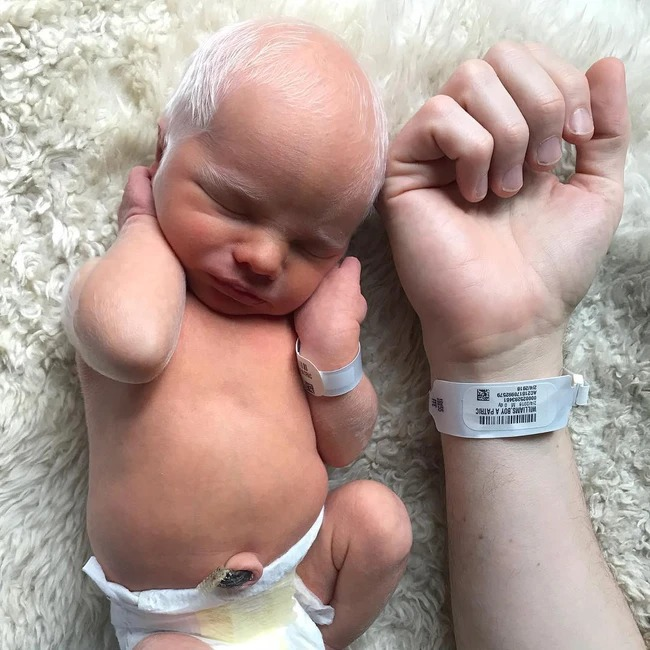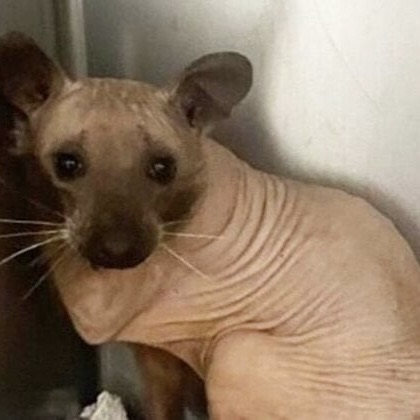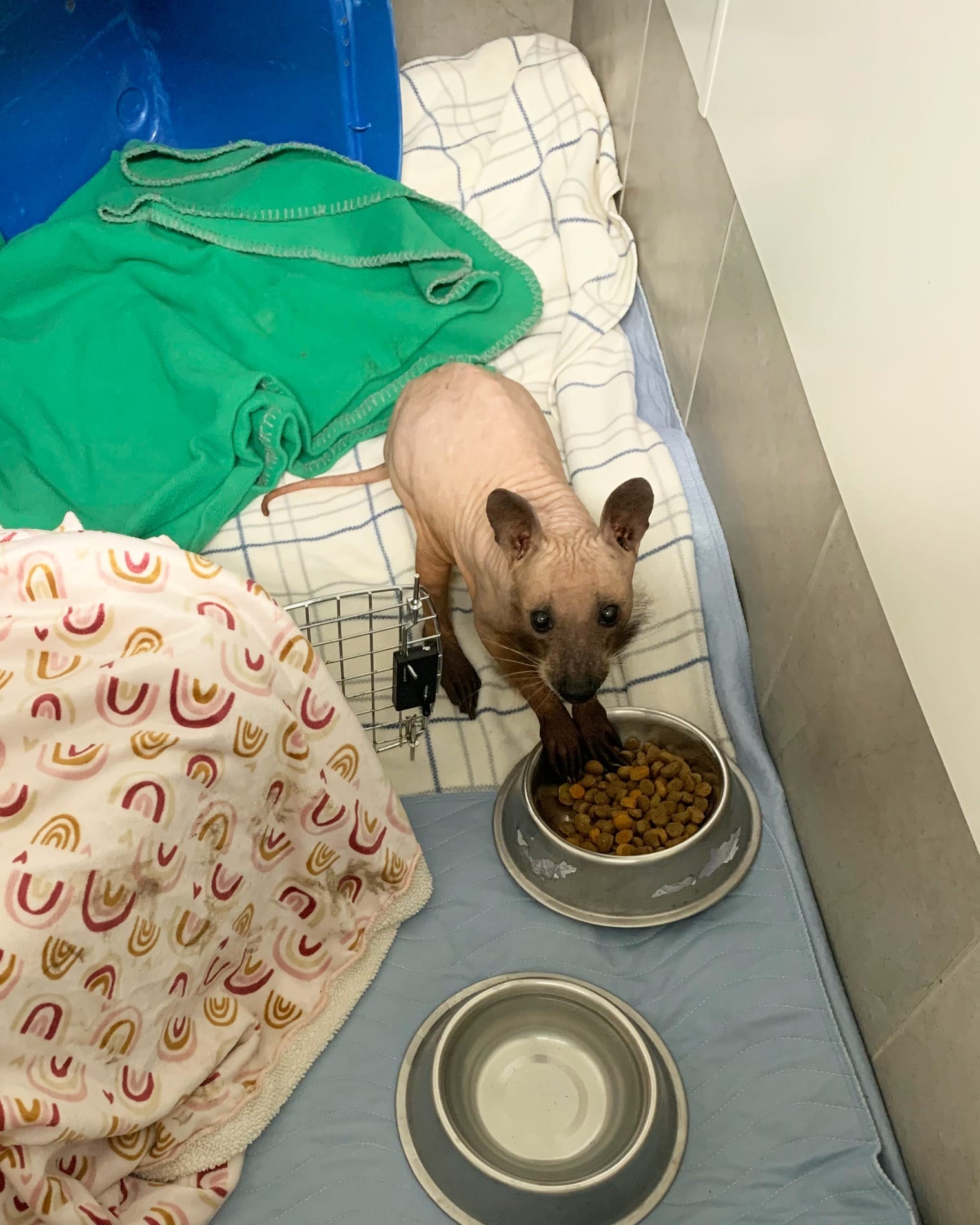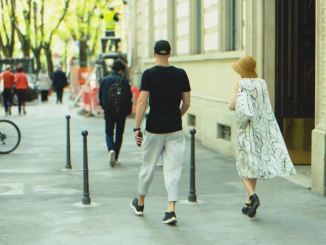
In 2012, Patricia and Dale Williams welcomed a special addition to their family: baby Redd. Amid their immense joy, they quickly noticed something unique about him—his snow-white hair, a striking feature that set him apart from other infants. When Redd was about two months old, his parents observed his eyes constantly moving from side to side, which sparked concern.
Worried, they searched online for information and suspected that Redd might have albinism. Determined to find answers, they scheduled appointments with optometrists and genetic specialists. Their suspicions were confirmed when Redd was diagnosed with Oculocutaneous Albinism Type 1 (OCA1), a rare condition affecting only 1 in 17,000 people worldwide.
Initially, the hospital staff marveled at Redd’s unique appearance, expecting his hair color to change as he grew older. However, after the diagnosis, Patricia realized that Redd’s distinctive white hair and blue eyes, which occasionally shimmered red in certain lights, would be a permanent part of his identity.
In 2018, the Williams family welcomed another son, Rockwell, who also shared Redd’s condition.
Despite their parents’ efforts to instill confidence, both Redd and Rockwell faced adversity at school, enduring teasing and bullying due to their appearance. Their older brother, Gage, who does not have albinism, became their protective shield, but the challenges persisted.
The family faced a distressing incident when a photo of Rockwell shared on social media turned into a meme and spread rapidly across the internet despite their pleas for its removal.
Refusing to let negativity overwhelm them, Patricia and Dale chose a different path—they became advocates, driven by a mission to raise awareness about albinism. Patricia’s social media platform grew significantly after Rockwell’s photo went viral, prompting numerous inquiries that revealed the widespread lack of understanding about albinism in society.
Redd underwent corrective eye surgery for his strabismus, transitioning from a specialized school for visually impaired children to a public institution. This decision significantly improved Redd’s life; the family opted for surgery over eye patches to minimize attention and reduce bullying.
On April 28, 2023, Patricia shared a heartwarming video of Rockwell participating in his school’s “Western Day.” This time, the response on social media was overwhelmingly positive, contrasting starkly with the past instances of name-calling and ridicule.
Today, both Redd and Rockwell are thriving in their own unique ways.
Consider sharing this story to spread awareness and support for individuals with albinism among your family and friends.
Animal rescued from the cold looks like a hairless cat — you’ll never guess what it really is

For many animals, fur is essential because it offers much-needed insulation from the cold. Additionally, it gives them their unique appearances; there are some creatures that you might not even identify when they are fully bald.
A more rarer critter that resembles a hairless cat was just taken up by rescuers. Continue reading to find out more about this unusual species and her improbable survival.
The strangest animal was adopted by Hope for Wildlife, a charitable conservation organization in Nova Scotia, last month. A couple in West Arichat found the animal, suffering in the cold, in their backyard, according to the Canadian Press.
The creature appears to be a Sphynx cat at first glance, but it’s actually a fully hairless raccoon!

Without their distinctive fur pattern that resembles a mask, raccoons are definitely difficult to identify. This small animal, a northern raccoon, suffers from severe alopecia, which has left it entirely bald.
There have been examples of balding raccoons in the past, but nothing like this, according to the rescue: “It’s just tufts of fur around the snout, ankles and feet.” The Canadian Press was informed by Hope Swinimer, director of Hope for Wildlife, that the situation was serious.
Despite being female, the raccoon has been named Rufus in honor of the character from the Kim Possible cartoon who is a naked mole rat.
The rescue said on Facebook that they are still in the process of diagnosing the reason for her hair loss and that it might be an autoimmune condition causing harm to her hair follicles. Not only did they rule out fungal infections, mange, and parasites, but they also noted that her skin looked healthy.

Since raccoons rely on their fur to remain warm and shield their skin from the weather, Rufus’s survival for this extended period of time astounded the rescuers.
“We are astonished that this small lady survived the winter without fur and without getting frostbite or worse!” the Facebook post stated.
They went on to say that she was “her own doing” and that she had a “feisty” personality. Nevertheless, given that she was apparently “down and out upon arrival,” it appears that she was saved just in time.
For a few brief hours, we were in a panic, but then she became hungry and came out. We’ve noticed a significant change since she first came, and she’s becoming really feisty now, Swinimer told The Canadian Press.
Given the situation, Rufus may end up staying at the shelter permanently. In addition to having a dedicated habitat, an outside area with a place to crawl into for warmth, and other facilities like hammocks and nesting boxes, Rufus will have all of these.
We’ve never before seen a raccoon without hair! Rufus’s prolonged survival in the wild is amazing, and we’re happy that she was discovered and is receiving quality care.



Leave a Reply